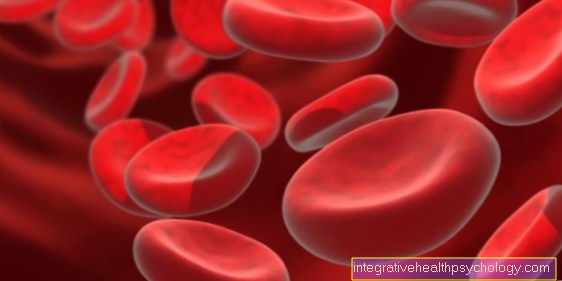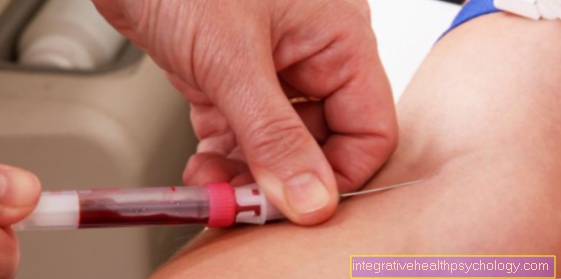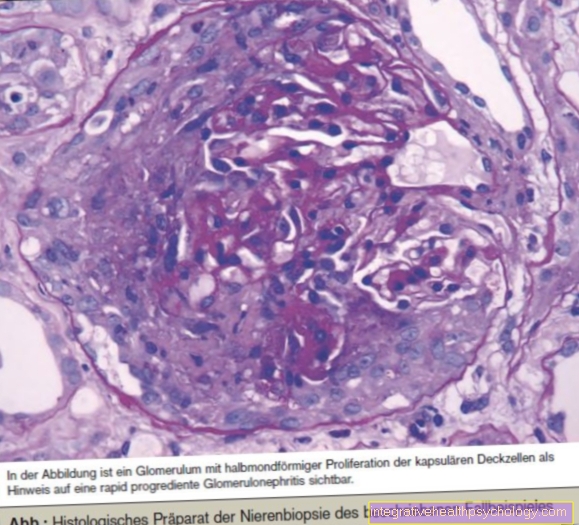Test for ADS
definition
An ADD test is designed to find out whether a patient has attention deficit disorder without hyperactivity or not. Since this is a subtype of ADHD, it is usually part of a conventional ADHD test, which consists of many different examinations.
The detection of this non-hyperactive form is difficult and often occurs late because the symptoms are much less noticeable. It is therefore assumed that some sufferers will never be diagnosed.
You might also be interested in: Symptoms of ADD

What tests are there?
As with ADHD, there is no single, conclusive test.
The diagnosis consists of a detailed anamnesis, physical, neurological and psychiatric examination, development, behavior and intelligence tests and, if necessary, further measures, since ADD is an exclusion diagnosis.
If typical characteristics are noticed, e.g. The dreaminess and concentration problems of the person concerned are clarified by the doctor using the diagnostic means mentioned above. Part of these examinations are, among other things, tests that are intended to determine concentration, attention and intelligence, query typical symptoms and are also used in conventional ADHD.
Examples of this are questionnaires such as the SDQ (Strengths and Difficulties Questionnaire) and the Connors scales or attention tests such as the TAP (test battery for attention testing) and computer-aided procedures such as the QB test.
Typical self-tests such as those offered on the Internet can provide initial indications of the disease, but do not allow a reliable diagnosis.
Read more on the topic: Therapy of ADD
Which doctor tests that?
Children are tested by the pediatrician, adults by the family doctor or psychiatrist.
If it is first suspected, tests can also be carried out by teachers or other specialists. Due to the variety of tests, several specialists are involved depending on the appearance of the ADS. This makes sense because different departments have to be involved in the therapy.
Read more on the topic: Causes of ADD
Tests for children
Attention, concentration and intelligence tests test the child's abilities, regardless of the cause of a possible disorder.
So, these tests can be used for many diseases that affect alertness and focus. Therefore, the same tests are used for ADD as for ADHD, e.g. Questionnaires, rating scales, attention tests and much more, although the test results vary.
Areas of the tests that are supposed to check for hyperactivity and impulsivity will be less noticeable in ADD children than in ADHD, whereas psychological behavior disorders will come to the fore. For the diagnosis of ADD, it is therefore advisable to select the tests that primarily record and differentiate psychological abnormalities (such as the DIPS (diagnostic interview for mental disorders) or pure attention and concentration problems (such as the computer-aided concentration tests).
If the doctor already suspects the non-hyperactive form of ADHD based on the medical history, he selects the tests accordingly. He queries typical behavior problems in school and everyday life at home with the help of parent and teacher questionnaires and checks concentration using reaction games on the computer or other methods. It also tests whether the child is developing normally and of average intelligence, as developmental disorders can also cause the symptoms.
In some cases, ADD may even affect the child's growth, which is also checked here. Tests of sensory impressions, e.g. hearing and eyesight, are also part of the diagnostic spectrum. Typical ADHD questionnaires are also used, including In order to rule out other forms of attention disorder, however, are less effective with ADD, because they are often more aimed at the physical rather than psychological symptom complexes.
Children with ADD are therefore tested similarly to children with ADHD, but the choice of tests is slightly different. In addition, the general anamnesis and the questioning of parents and teachers are just as important as the actual testing, as the observed behavior is the most important clue for the ADD diagnosis.
You might also be interested in: ADD and family
ADS dreamer test
Tests for non-hyperactive, possibly “dreamy” ADD do not ask about hyperactivity or impulsiveness, but rather typical symptoms such as mental absenteeism, poor concentration or forgetfulness. The resulting problems in school or work should also be recorded by these tests for "dreamers".
But just as there cannot be a single, unambiguous test for ADHD, it has not yet been possible to create a conclusive test for ADD. The disease is just too complex and different for everyone to be detected by a single standardized test.
Tests for adults
As with children, the typical ADHD tests are used in adults and expanded upon suspicion of non-hyperactive ADD. But while the range of possible appearance is already extremely wide in children, the severity of symptoms in adults is even more variable.
By definition, the disorder has existed since childhood, so the adult patient has had many years to compensate, hide or modify his symptoms. Determining this beyond doubt by means of a test is almost impossible. Therefore, if an attention disorder is suspected, a whole battery of tests is used in adults too, which provides a whole range of different results from questionnaires to physical examinations and psychological tests, which the doctor then has to interpret as ADD.
As with children, this includes a detailed medical history, questionnaires, concentration and attention tests, physical examinations, determination of IQ and many more. The same procedures are used here as in typical ADHD, such as the WURS (Wender Utah Rating Scale) or the TAP (test battery for attentiveness testing).
In addition, more attention is paid to psychological problems in ADD, e.g. through special questionnaires or a targeted medical history, while hyperactivity and impulsiveness can usually be neglected. Unlike with children, the doctor should also ask about compensation strategies that the patient uses to cover up his symptoms and avoid unpleasant situations. For example, a typical social reluctance would be to avoid interpersonal problems and misunderstandings, as is often the case with ADD.
In adults, diagnosing ADD is therefore a complex process that often involves several doctors. As with children, however, a detailed discussion with the patient is just as important as the actual testing. A doctor who knows the clinical picture well can determine such a complex disorder better than standardized tests, which are then used to complete and better isolate or to control therapy.
The editors also recommend: ADD diagnosis in adults
Course of a test
The ADD test procedure does not differ from that of the ADHD tests. Depending on the test situation, those affected have to fill out questionnaires, complete tasks on the computer and follow the doctor's instructions for physical examinations.
Depending on the test, something different is expected of the patient, e.g. ticking the correct answer, reacting quickly to an action on the screen or simply answering questions. The tests are structured as easily as possible and are explained to the patient in advance in order to prevent the results from being distorted by misunderstandings.
In children, many tests are designed as games, since a lack of motivation could also worsen the results. The tasks must not be too difficult in order not to overwhelm the candidates' ability to concentrate or to frustrate them. If the testing is used for diagnostics, it is part of a detailed examination and follows a doctor's talk or something similar. To control the therapy, the patient is invited to the test at a fixed time after taking the medication.
Are there also online tests?
As with ADHD, there are also a large number of questionnaires and self-tests for ADS that are offered on the Internet. They are very popular because they are very easy to carry out, those affected can access them from home and receive answers immediately.
Unfortunately, these tests are often imprecise, come from dubious sources and are designed by laypeople. has therefore designed a self-test based on medical guidelines, which you can find on this page. Although this test does not give you a 100% probability of a diagnosis of ADD, it does tell you whether the diagnosis is probable and you should have further tests by specialists.





























